Once again, and now this is becoming somewhat
complicated.
|
CLOSE TO THE PLEIADES: |
|
MIRAM
(η) |
*5 |
MISAM (κ) |
*11 |
MENKHIB
(ζ) |
|
*41 |
*46 |
*57 |
 |
 |
 |
|
*16 = *57 - *41 |
|
Aue.
Ah, alas. Aueue,
oh. P Pau., Ta.: aue,
alas. Mgv.: aue,
auhe, alas. Mq.: aue, oh,
alas; auhe, a sigh. Exclamation
in general representing the most
primordial type of speech, it seems that
this may be reduced to recognizable
elements. The e is throughout
these languages a vocative or hailing
sign, commonly postpositive in relation
to the person hailed. In the examination
of au we have shown that the
primal first person singular designation
is u. With the comparatively
scanty material afforded by this
vocabulary we may not attempt to define
the use of a but we have no
hesitation in noting that proof based on
wider studies will show it to have,
inter alia, a characteristic
function as a word-maker. In a very high
degree, then, a-u-e is
represented by a common English
interjection 'oh my!' in which oh = a,
my = u, and e = !.
Churchill. What is this cry which our
primitive islanders share with the
animals? Look at its elements, all
full-throated. First we have a,
the sound of mouth open, fauces open,
lungs full of air. As air expires the
sound recedes in the mouth towards the
palate and we find the u. Last
comes the conscious finish of the
utterance, the muscles begin to retract,
the sound-making point is forced forward
and the sound is e. If the man
had but a few more cubic centimeters of
lung capacity he could attain cow
volumne for his cry, or interjection,
since it amounts to the same thing.
Churchill 2. When the new moon appeared
women assembled and bewailed those who
had died since the last one, uttering
the following lament: 'Alas! O moon!
Thou has returned to life, but our
departed beloved ones have not. Thou has
bathed in the waiora a Tane, and
had thy life renewed, but there is no
fount to restore life to our departed
ones. Alas ... (Makemson) |
|
e tagata haga era ki te mea
ke |
8 |
koia kua here i to reva ika -
kua huka ia - i to maro |
65 |
e tagata itiiti mea mau - i
te vaha |
|
 |
 |
 |
 |
|
Ba10-24 (413) |
Bb1-1 (422 = 322 + 100) |
Bb1-2 |
Bb2-37 (68) |
|
ZIBAL (*413 = *48) |
MENKHIB
(*422 = *57) |
ZAURAK (*58) |
AL TARF (*489 = *124) |
|
FEBR 17 (413) |
FEBR
26 (422) |
27 (58) |
MAY 4
(124) |
|
April 22
→ 4-22 |
May 1 (*41 = *57 - *16) |
2 (*241 - *199 = *42) |
July 7 (*307 - *199 = *108) |
|
*231 = *413 - *182 |
*240 = *57 + *183 |
*241 = *42 + *183 + *16 |
GREDI (*307) |
|
MAY 21 (*61 = *125 - *64) |
287 |
MARCH 5 (*349 = *413 - *64) |
76 |
|
 |
 |
|
Ga3-2 (61) |
|
|
BRIGHT FIRE = λ Cancri (*125.4)
125 = 5 * 25 |
ZIBAL = ζ Eridani (*413)
413 = 14 * 29½ = 365 + 48 |
|
288 |
77 |
|
365 |
 |
|
May 21 (*61) |
287 |
March 5 (*349 = *61 + *288) |
76 |
|
 |
 |
|
LESATH = ν Scorpii (*61 + *182 =
*243)
243 = 9 * 27 = 61 + 182 = 125 +
118 |
DUBHE = α Ursae Majoris (*349 +
*182 = *531)
531 = 18 * 29½ = 370 + 161 |
|
288 |
77 |
 |
I have
suggested
the 'bird looking down' in Ga3-2
coincided with heliacal λ Cancri in MAY
21 (141) according to the Golden Age of
the Bull.

472 / 4 + 5 * 13 = 118 + 65 = 3 * 61 = 183 right ascension days
later could then be a suitable place for the
Sting of the Scorpion's tail. 141 + 183
= 324:
|
MAY 21 (141) |
118
|
SEPT 17 (244 + 16) |
18 (261 =
9 * 29) |
|
 |
 |
 |
|
Ga3-2 (61) |
Ga7-11 |
Ga7-12 (181) |
|
122 = 2 * 61 |
|
λ Cancri (*125) |
183 |
ν Scorpii (*244) |
YED PRIOR
|
|
July 24 (205) |
Nov 20 (324) |
21 (→ 3-25) |
|
122
+ 65 = 187 |
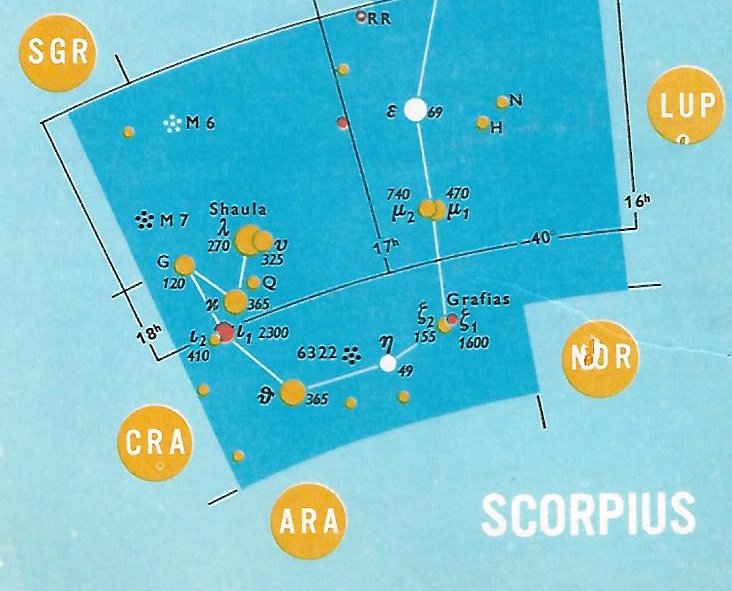
The Sting (Lesath) is in the map here above
denoted υ (325) Scorpii (*264).
80 + 264 = 344 = 324 (Nov 20) + 20 =
325 + 19.
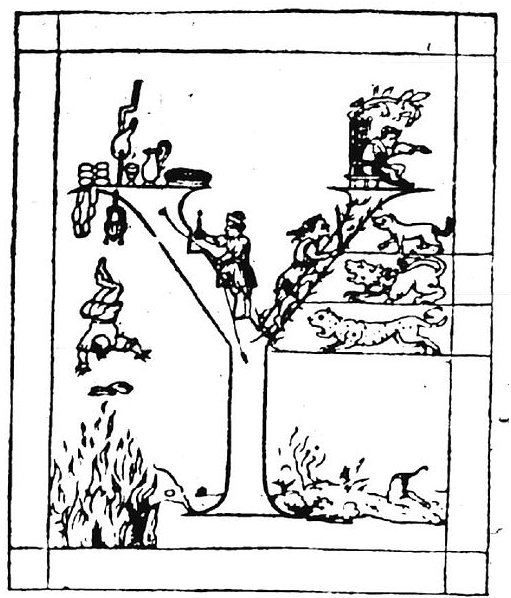
However, in
my star list also ν Scorpii (*244)
is named Lesath:
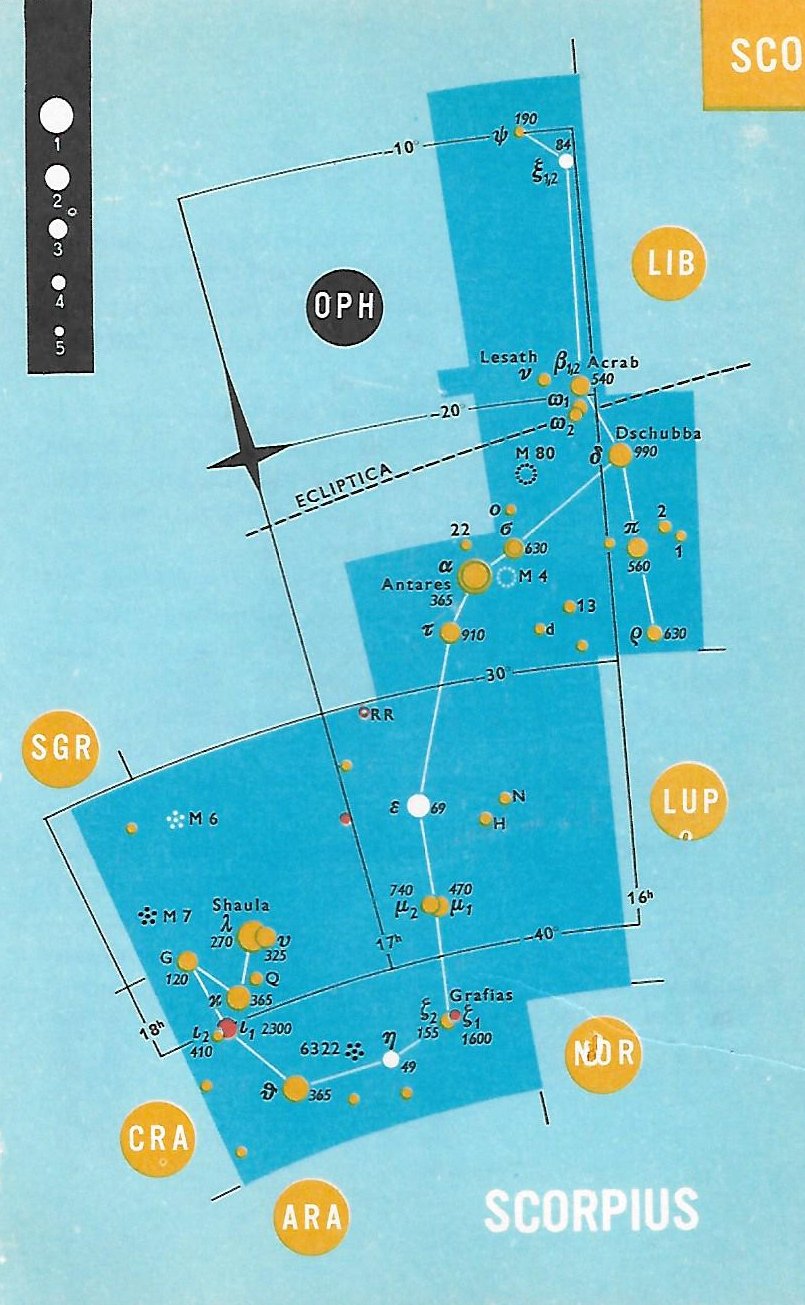 Should we not read this
collage as a Sign?
Returning to the Roman floor mosaic we could count
anew:
... The 8 constellation panels on
the front (facial) side are balanced
against similar panels on the
opposite side of the year, but only
5 such. I guess: 273 / 13 = 21; 8 *
21 = 168; and 5 * 21 = 168 - 63. 16
* 21 = 336 for the whole cycle
ending with December 2 (4 * 84 = 48
weeks). 365 - 336 = 29 ...
8 + 5 = 13, and the
Mayan tzolkin combined 13 (= 364
/ 28) with
20 day-names in order to reach 260,
corresponding to 16 days more than
*244
at ν Scorpii (the Sting of the
Scorpion).
|
0 |
1 |
2 |
3 |
4 |
5 |
6 |
7 |
8 |
9 |
10 |
11 |
12 |
13 |
14 |
15 |
16 |
17 |
18 |
19 |
|
20 |
|
... There, half buried in
the sand was a giant
clamshell. As his shadow
fell upon it, he heard
another muffled squeak.
Peering down into the
opening between the halves
of the shell, he saw it was
full of tiny creatures,
cowering in fear at his
shadow ...
Raven
began to search for the
girls. For it is the way of
things in the world that
there are both males and
females of every creature.
Somewhere there must be
girls. Raven searched and
searched. Under logs and
behind rocks, he looked. But
he could not find the hiding
place of the first girls.
But as he searched, the tide
was going out, and as it
reached its lowest, the
Raven spotted some giant
Chitons clinging to the
rocks. These giant shell
fish had but one shell,
fastened tightly to the
rocks with huge soft lips
around their edges. Raven
pried one loose with his
beak. And there inside was a
girl. He pried off another,
and another, and another in
each was a girl ...
|
After the tide had gone out (after
'midsummer') the girls (Adara,
virgins)
became visible. The Moon calendar
probably served as a model for the
Sun calendar, and after the
overpowering light from the Moon
(after 20 illuminated nights) had receded the stars again
became visible.
... The Gilbert
Islanders are Polynesians, having
emigrated, according to their
traditions, from Upolu, Samoa,
which they look upon as te buto
(Maori pito), the Navel of the
World. They never counted the nights of
the Moon beyond the twentieth, so far as
Grimble was able to ascertain, and in
the vagueness of their lunar calendar
bore no resemblance to their Micronesian
neighbors of the Carolines ...
.jpg)
One of the names for
east, Makai-oa, was said to be
the name of a far eastern land, not an
island, which their navigators had
visited in ancient times. Tradition
called this great land 'the containing
wall of the sea, beyond the eastern
horizon, a continous land spreading over
north, south, and middle, having a
marvelous store of all sorts of food,
high mountains and rivers'. It was also
called Maia-wa (wa being
'space, distant'). This is a clear
reference to ancient voyages to the
American coast from which the
Polynesians are thought to have
introduced the sweet potato into the
Pacific area. The similarity of Maia
to Maya may be more than a coincidence
...
|
LESATH |
|
SEPT 17 (260) |
*20 |
OCT 7 (280) |
|
 |
 |
|
Ga7-11
(180) |
Ga7-31 (200) |
|
Nov 20 (*244) |
Dec 10 (*264) |
|
ν Scorpii |
υ (325) Scorpii |

81 (March 22) + 183 = 264 and *81 +
*183 = *264:
|
kua tupu te rakau |
kua tupu - te kihikihi |
te hau tea |
|
Kihi.
Kihikihi, lichen; also:
grey, greenish grey, ashen.
Vanaga. Kihikihi,
lichen T, stone T.
Churchill.
The
Hawaiian day was divided in
three general parts, like
that of the early Greeks and
Latins, - morning, noon, and
afternoon - Kakahi-aka,
breaking the shadows, scil. of night;
Awakea, for Ao-akea,
the plain full day; and Auina-la, the decline of
the day.
The lapse
of the night, however, was
noted by five stations, if I
may say so, and four
intervals of time, viz.:
(1.) Kihi, at 6 P.M.,
or about sunset; (2.) Pili, between sunset and
midnight; (3) Kau,
indicating midnight; (4.) Pilipuka, between
midnight and surise, or
about 3 A.M.; (5.) Kihipuka, corresponding
to sunrise, or about 6 A.M.
... (Fornander) |
 |
 |
 |
|
Ca4-1 (77) |
Ca4-2 |
Ca4-3 |
|
CLOSE TO THE FULL MOON: |
|
μ Aurigae, μ Leporis (77.6) |
ĸ Leporis (78.0),
RIGEL
(Foot) = β Orionis
(78.1),
Flaming Star = IC405
(78.2),
CAPELLA = α Aurigae (78.4),
ο
Columbae,
τ
Orionis (78.8)
*37.0 = *78.4 - *41.4
THUBAN (α Draconis) |
λ Aurigae (79.0), λ Leporis
(79.6), ρ Aurigae (79.7)
ARCTURUS (α Bootis)
|
|
CLOSE TO THE SUN: |
|
NODUS I = ζ Draconis
(260.0),
π
Herculis (260.7),
RAS ALGETHI = α Herculis
(260.8) |
SARIN = δ Herculis
(261.0),
ο Ophiuchi (261.4)
*220.0 = *261.4 - *41.4
ALRISHA (α Piscium) |
ξ Ophiuchi (262.2),
θ Ophiuchi, ν Serpentis, ζ,
ι Apodis (262.4),
ι Arae (262.8), ρ Herculis
(262.9)
*221.0 = *262.4 - *41.4 |
|
tagata - te rau hei |
te hokohuki i te moko |
te rau hei |
e gagata hakaariki |
manu |
te rau hei |
|
Rau
hei. 1. Branch of
mimosa. 2. Killed enemy. 3.
Hanged 'fish'. 'Branche
du mimosa (signe de mort),
ennemie túe (poisson
suspendu)'
according to Jaussen.
Barthel. ... The
Sensitive
plant
(Mimosa pudica
L.) is a creeping annual or
perennial herb often grown
for its curiosity value: the
compound leaves fold inward
and droop when touched,
re-opening within minutes.
Mimosa
pudica
is native to Brazil, but is
now a pantropical weed.
Other names given to this
curious plant are Humble
plant, TickleMe plant, Shame
plant, Sleeping Grass,
Prayer plant, Touch-me-not,
Makahiya
(Philippines, meaning
'shy'), Mori Vivi
(West Indies), mate-loi
(false death) (Tonga) ... In
the evening the leaflets
will fold together and the
whole leaf droops downward.
It then re-opens at
sunrise ... Mimosa (*192) is
a name for
β Crucis.
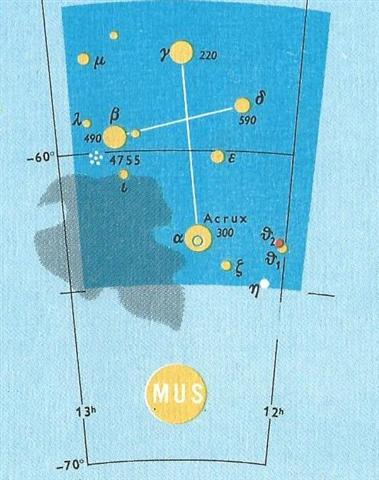 |
 |
 |
 |
 |
 |
 |
|
Ca4-4 |
Ca4-5 (81) |
Ca4-6 |
Ca4-7
(83) |
Ca4-8 |
Ca4-9 |
 |
|
CLOSE TO THE FULL MOON: |
|
Shur-narkabti-sha-iltanu-5
(Star in the Bull towards
the north)
σ Aurigae (80.4), BELLATRIX
(Female Warrior) = γ
Orionis, SAIF AL JABBAR
(Sword of the Giant) = η
Orionis
(80.7),
ELNATH (The Butting One) = β
Tauri = γ Aurigae
(80.9)
*39.0 = *80.4 - *41.4 |
ψ
Orionis (81.1),
NIHAL (Thirst-slaking
Camels) = β Leporis
(81.7) |
KHUFU
MINTAKA (Belt) = δ Orionis,
υ
Orionis (82.4),
χ Aurigae (82.5), ε Columbae
(82.6)
*41 = *82.4 - *41.4
→ 41 Arietis (Bharani) |
KHAFRE
Al Hak'ah-3 (Brand) /
Mrigashīrsha-5 (Stag's Head)
/
Turtle Head-20 (Monkey) /
Mas-tab-ba-tur-tur (Little
Twins)
ARNEB = α Leporis, CRAB
NEBULA = M1 Tauri
(83.0,
φ¹
Orionis (83.1),
HEKA = λ Orionis, ORION
NEBULA = M42
(83.2),
φ²
Orionis (83.6),
ALNILAM (String of Pearls) =
ε Orionis
(83.7) |
MENKAURE
Three Stars-21 (Gibbon) /
Shur-narkabti-sha-shūtū-6
(Star in the Bull towards
the south) /
ANA-IVA-9 (Pillar of exit)
HEAVENLY GATE = ζ Tauri,
ν
Columbae (84.0),
ω
Orionis (84.2),
ALNITAK (Girdle) = ζ Orionis,
PHAKT (Phaet) = α Columbae
(84.7) |
ο Aurigae (85.8), γ Leporis
(85.9)
YANG MUN (α Lupi) |
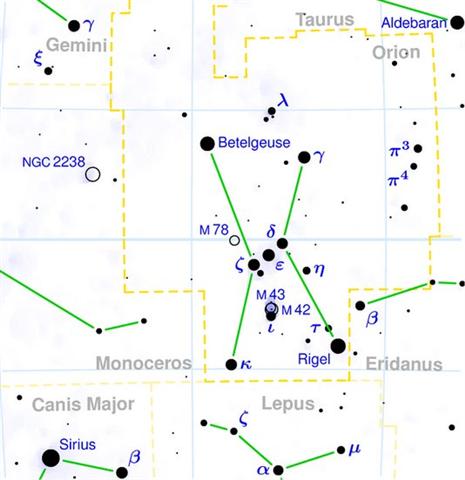 |
|
CLOSE TO THE SUN: |
|
β, γ Arae (263.3), κ Arae
(263.5), σ Ophiuchi (263.6) |
LESATH (Sting) = υ Scorpii,
δ
Arae (264.7),
CHOO (Club) = α Arae
(264.9) |
Al Shaula-17
ALWAID (Mother Camels) = β
Draconis, MAASYM (Wrist) = λ
Herculis
(265.1),
SHAULA (Sting) = λ Scorpii
(265.3),
KUMA =
ν Draconis
(265.6), σ Arae (265.9)
HAMAL (α ARIETIS) |
RAS ALHAGUE (Head of the
Serpent Charmer) = α
Ophiuchi
(266.1),
SARGAS = θ Scorpii (266.3),
μ Ophiuchi, π Arae (266.5),
NAN HAE (Southern Sea) = ξ
Serpentis
(266.6), AL
DHĪLI (The Wolf) = ω
Draconis,
ι Herculis (266.7) |
λ
Arae (267.1),
GIRTAB (Seizer) = κ Scorpii,
ο
Serpentis (267.6),
DSIBAN (Wolf Pair) = ψ
Draconis
(267.9) |
KELB ALRAI (Dog of the
Shepherd) = β Ophiuchi,
μ
Arae
(268.1),
KEW HO (Nine Rivers) = μ
Herculis
(268.6),
η
Pavonis (268.7),
APOLLYON = ι Scorpii
(268.9) |
 |
|
te hokohuki |
te moko |
te hokohuki |
|
Hoko.
1. To jump;
to rock or
swing in rhythm with the
chants in festivals, as
was the ancient custom;
an ancient
dance. He to'o mai e
te hoa manu i te mamari
ki toona rima, he ma'u,
he hoko, the 'bird
master' receives the egg
in his hand and carries
it, dancing. 2. Number
prefix: 'in a
group of...': hokotahi,
alone; hokorua, in a group of two (also companion, e
hakarere te kai mo toou
hokorua, leave some
food for my companion);
hakatoru, in a
group of three, etc.; hokohía, in a group
of how many? Hokohía
ana oho koe ki te rano?
With how many people
will you go to the
volcano? Vanaga. 1. To
traffic, to trade, to
buy, to ransom (hoò);
hoòa te kaiga, to
buy land. 2. To sport,
to play. Churchill. Move
the body to and fro with
the rythm of a song.
Barthel.
Huki.
1. Pole
attached to the poop
from which the
fishing-net is
suspended: huki
kupega. 2. Digging
stick. 3. To set
vertically, to
stand (vt.). 4. Huki
á te mahina, said of
the new moon when both
its horns have become
visible. Vanaga. 1. To
post up, to publish. 2.
To cut the throat (uki).
Mq.: Small sticks which
close up the ridge of a
house. Ha.: hui,
the small uniting sticks
in a thatched house.
Churchill. Standing
upright. Barthel. M.
Spit for roasting. Te
Huki, a
constellation. Makemson.
Hukihuki. 1.
Colic. 2. To
transpierce, a pricking.
3. To sink to the
bottom. Churchill. |
 |
 |
 |
|
Ca4-10 |
Ca4-11 |
Ca4-12 (88) |
|
CLOSE TO THE FULL MOON: |
|
μ Columbae (86.1),
Saiph (86.5), ζ
μ
Columbae,
SAIPH (Sword) = κ
Orionis
(86.5),
τ
Aurigae,
ζ
Leporis (86.6) |
υ Aurigae (87.1), ν
Aurigae (87.2),
WEZN (Weight) = β
Columbae,
δ Leporis (87.7),
TZE (Son) = λ Columbae
(87.9) |
Ardra-6 (The Moist One)
/
ANA-VARU-8 (Pillar to
sit by)
χ¹
Orionis,
ξ
Aurigae (88.1),
BETELGEUZE = α Orionis
(88.3),
ξ
Columbae (88.5),
σ
Columbae (88.7)
ZUBEN ELGENUBI (α
Librae) |
 |
|
CLOSE TO THE SUN: |
|
MULIPHEN (Oaths) = γ
Ophiuchi
(269.0),
BASANISMUS = G Scorpii
(269.5),
PHERKARD (Dim One of the
Two Calves) = δ Ursae
Minoris
(269.9) |
PTOLEMY CLUSTER = M7
Scorpii
(270.5),
GRUMIUM (Lower Jaw) = ξ
Draconis
(270.9) |
RUKBALGETHI GENUBI
(Bending Claw) = θ
Herculis
(271.1), ξ Herculis
(271.5),
ETAMIN (Head) = γ
Draconis,
ν Herculis (271.7), ν
Ophiuchi (271.8) |
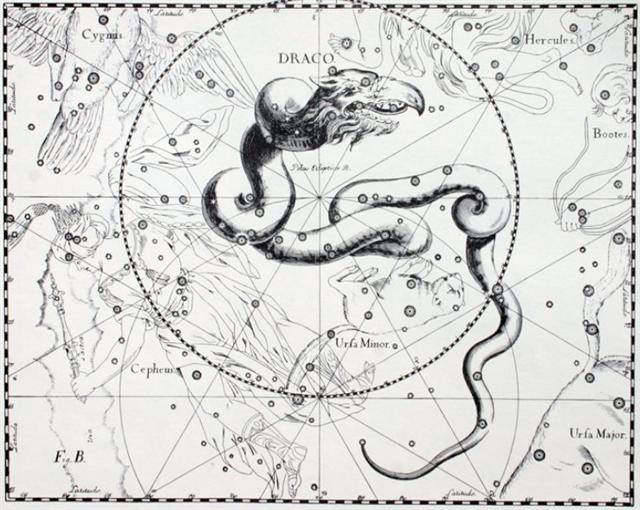 |
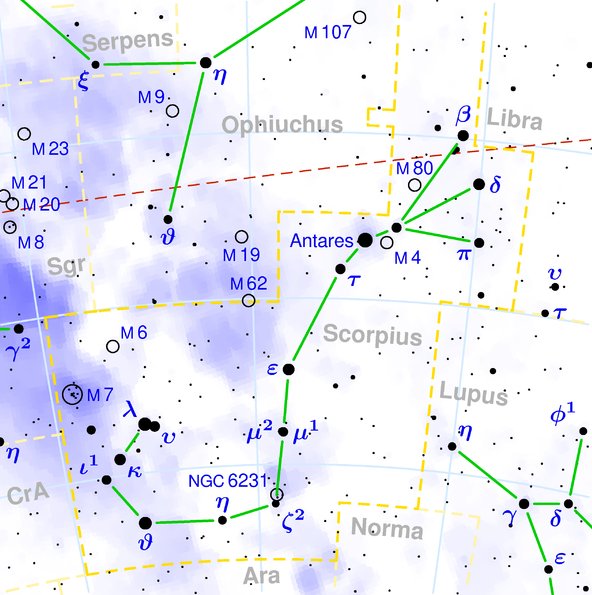
|













.jpg)














